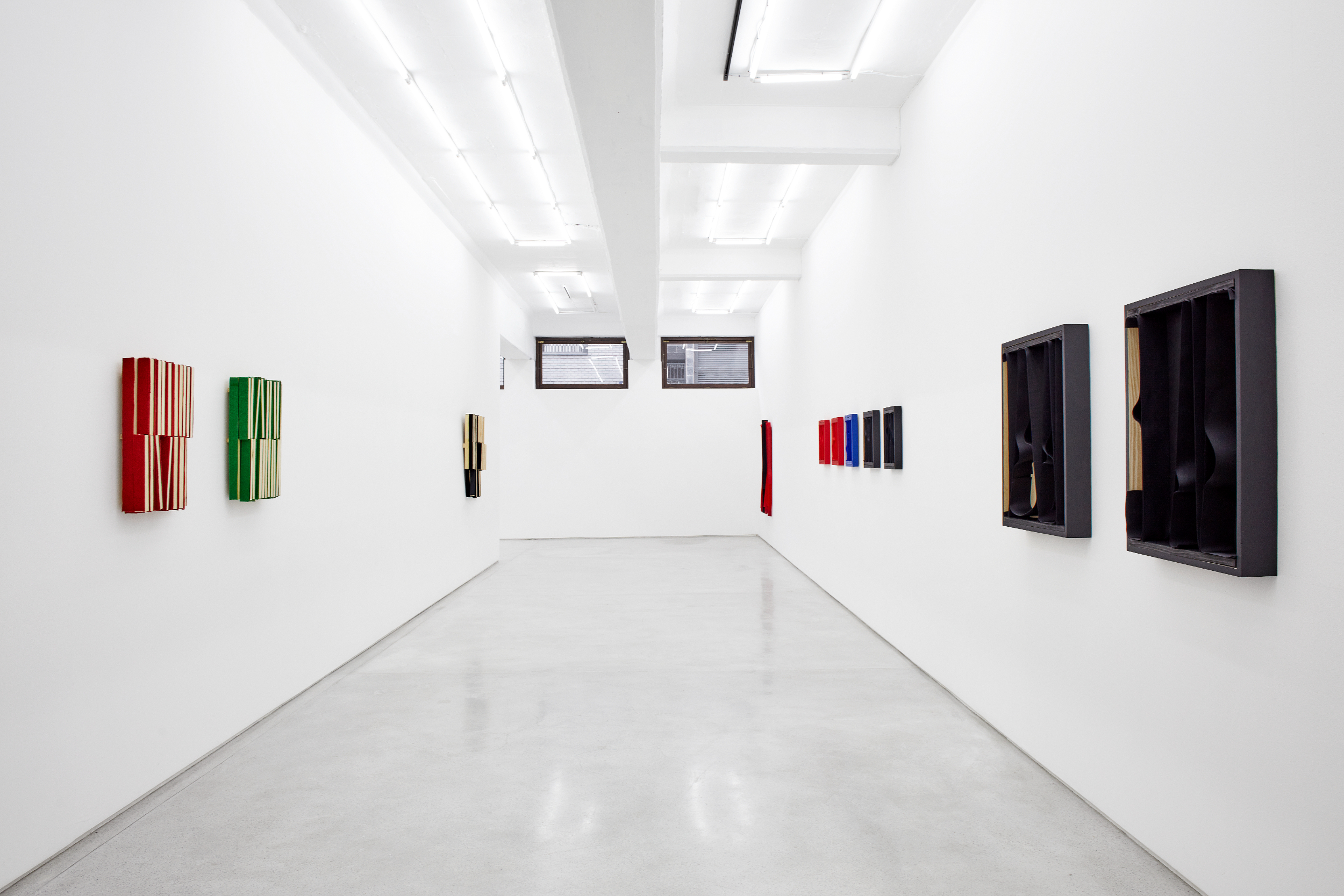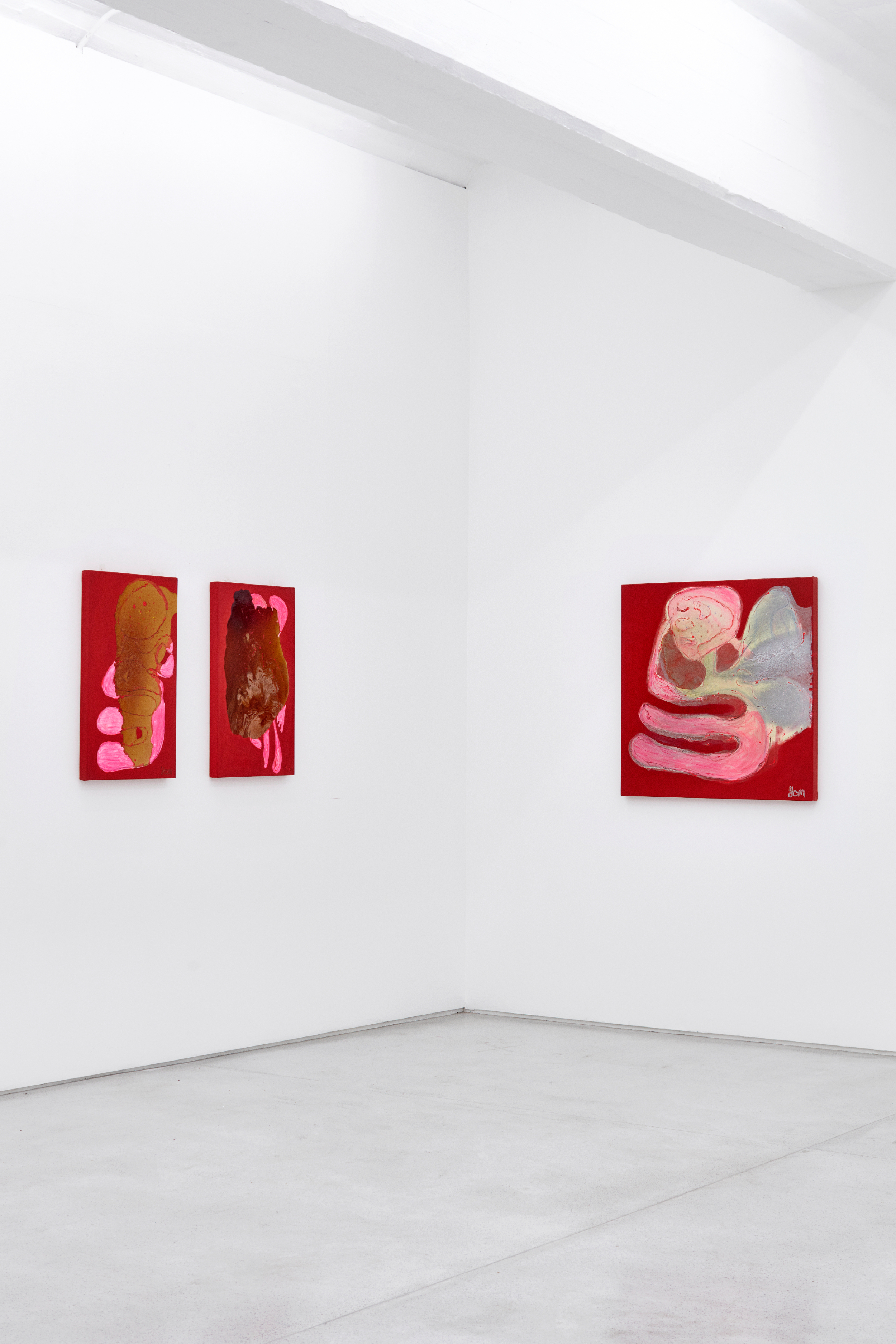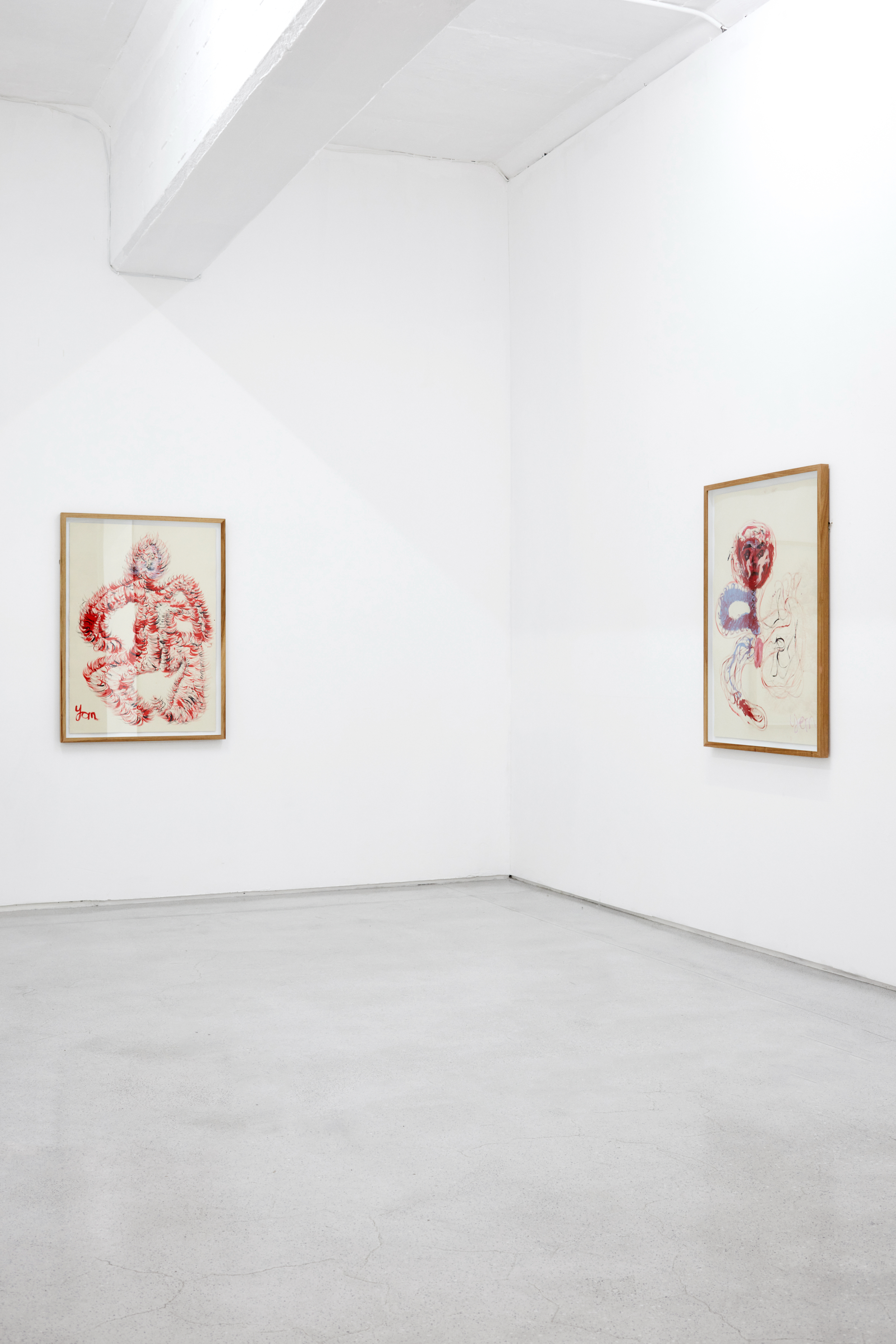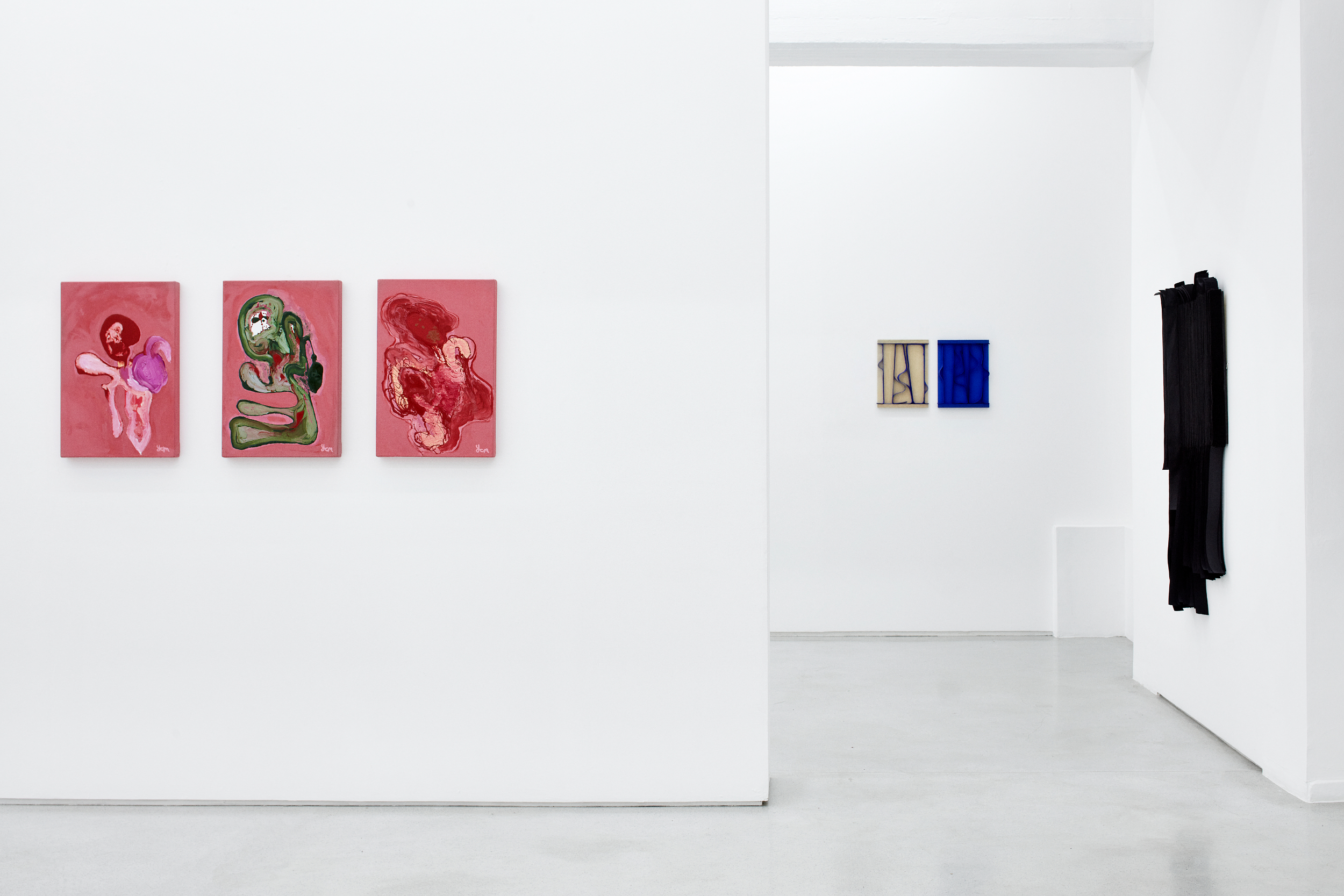Mazwana | Mkonto
2021.11.04–2021.12.15
2021.11.04–2021.12.15
Yolanda Mazwana
There is a stark energy emerging from Yolanda Mazwana’s body of work, most notably embodied by the harrowing and guttural evocation we tend to feel when viewing art that so deeply conveys the eternal and internal spectrum of human affliction. Born in Port Elizabeth, yet raised in Johannesburg, Mazwana is self-taught, and thus her practice tends to exist outside the confines of traditional, stylistic expectations – and while this visceral, intuitive aptitude for form is evident – Mazwana produces work that fits comfortably within the realm of neo-expressionism. The intensity of her brushstrokes, and the birthing of familiar figures such as the body are tempered by vivid, emotional colours. With this being said, Mazwana’s incredible weaving of neo-expressionist principles is more indicative of her innate capacity to translate abstractions of the human experience than it does of any confinement that art tends to fall into; and in this way, makes for a compelling case that at its very essential nature, the act of creative expression is beyond what can be taught or institutionally rendered.
Unathi Mkonto
Unathi Mkonto is a multi-disciplinary artist based in South Africa. His spatial practice uses art to explore the conditions of the built environment – drawing on his disciplines as both a trained architect and fashion designer. A fascinating inquiry informing Mkonto’s work are the spaces that we inhabit; and while he remains ever concerned with function and form, it is his ability to translate 2-dimensional flat plans – as with pattern making and blueprints in fashion and architecture respectively - into 3-dimensional, sculptural pieces that compose his stylistic and thematic process. Understanding the “housing” of both the body in an immediate sense, such as with garments, as well as on a greater scale such as buildings – this contrast between these two skill-sets showcase the inclusive and intimate landscape in which fashion and architecture exist; necessarily so, but also as a simultaneously ancient-yet-contemporary functions of the human experience.
There is a stark energy emerging from Yolanda Mazwana’s body of work, most notably embodied by the harrowing and guttural evocation we tend to feel when viewing art that so deeply conveys the eternal and internal spectrum of human affliction. Born in Port Elizabeth, yet raised in Johannesburg, Mazwana is self-taught, and thus her practice tends to exist outside the confines of traditional, stylistic expectations – and while this visceral, intuitive aptitude for form is evident – Mazwana produces work that fits comfortably within the realm of neo-expressionism. The intensity of her brushstrokes, and the birthing of familiar figures such as the body are tempered by vivid, emotional colours. With this being said, Mazwana’s incredible weaving of neo-expressionist principles is more indicative of her innate capacity to translate abstractions of the human experience than it does of any confinement that art tends to fall into; and in this way, makes for a compelling case that at its very essential nature, the act of creative expression is beyond what can be taught or institutionally rendered.
Unathi Mkonto
Unathi Mkonto is a multi-disciplinary artist based in South Africa. His spatial practice uses art to explore the conditions of the built environment – drawing on his disciplines as both a trained architect and fashion designer. A fascinating inquiry informing Mkonto’s work are the spaces that we inhabit; and while he remains ever concerned with function and form, it is his ability to translate 2-dimensional flat plans – as with pattern making and blueprints in fashion and architecture respectively - into 3-dimensional, sculptural pieces that compose his stylistic and thematic process. Understanding the “housing” of both the body in an immediate sense, such as with garments, as well as on a greater scale such as buildings – this contrast between these two skill-sets showcase the inclusive and intimate landscape in which fashion and architecture exist; necessarily so, but also as a simultaneously ancient-yet-contemporary functions of the human experience.
INSTALLATION
— Click Image to View









